Saline Solution vs. Contact Lens Solution: What’s the Real Difference?
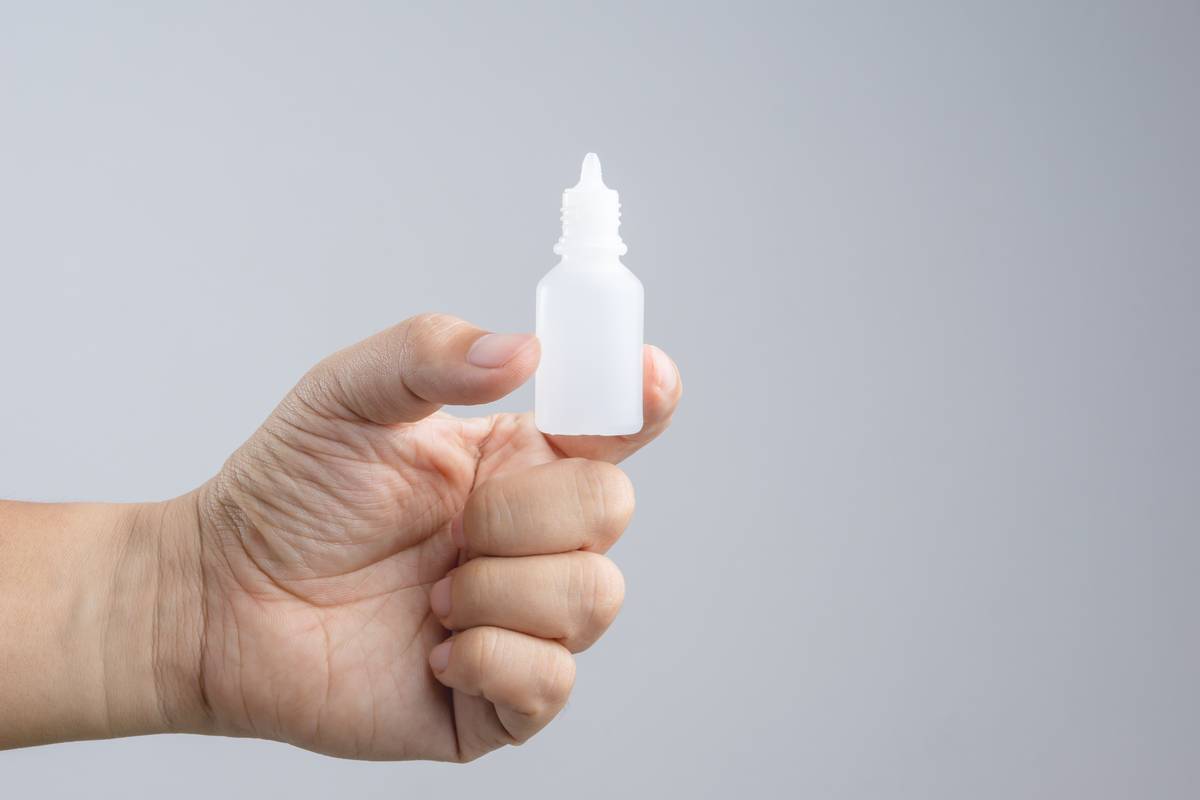
Keeping your contact lenses clean is essential to prevent eye irritation and infection. If you wear contacts, you’ve probably noticed there are different types of cleaning solutions available. The two most common are saline solution and contact lens solution.
Many people assume they’re the same, but they serve very different purposes. Understanding how they differ will help you care for your lenses properly and protect your eye health.
Contact Lens Solution vs Saline Solution
Let's go into detail about some of the differences of both solutions. We’ll explore what they should be used for, and why it's good for your health to use each one properly.
What Is Contact Lens Solution?
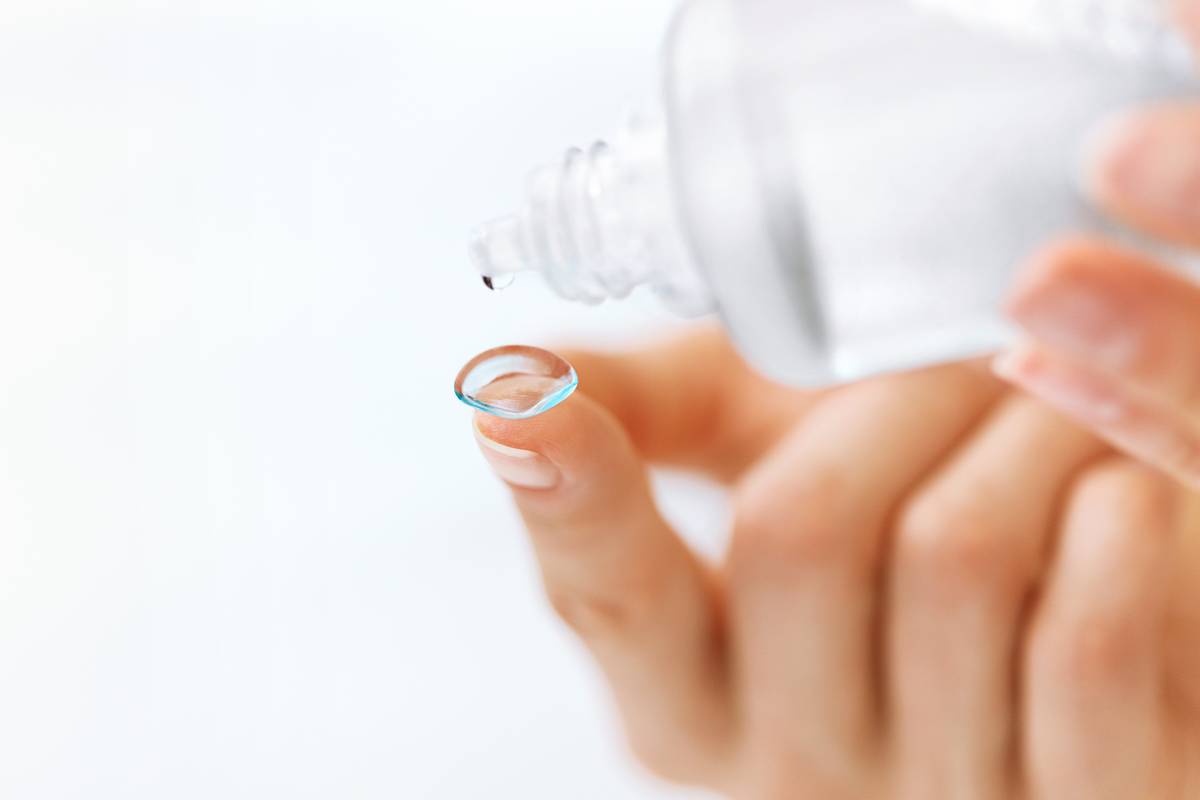
Contact lens solution is designed to clean, disinfect, and store your contact lenses. It helps remove debris, bacteria, and protein buildup while keeping your lenses hydrated.
Modern contact solutions replaced older, heat-based disinfecting methods used decades ago. Today’s solutions are multipurpose and typically contain:
- Cleaning agents to remove dirt and protein deposits
- Disinfectants to eliminate harmful microorganisms
- Lubricants and moisturizers to keep your lenses comfortable
You should use contact lens solution for both cleaning and storing your lenses. It ensures they remain sterile and safe to wear each day.
What Is Saline Solution?
Saline solution is a simple, pH-balanced saltwater solution. It is gentle on the eyes and is primarily used for rinsing contact lenses before insertion.
Unlike contact lens solution, saline does not contain disinfecting or cleaning agents. It’s meant to remove leftover residue or debris right before you put your contacts in.
In the past, contact lens care required multiple solutions: one for disinfecting, one for protein removal, one for rinsing, and one for storing. Saline was part of that multi-step system. Today, most people use multipurpose contact lens solutions that do everything in one step, but saline still has its place for sensitive eyes or certain cleaning systems.
Important: Never use saline solution to disinfect or store your lenses. It lacks the ingredients needed to kill bacteria or prevent contamination.
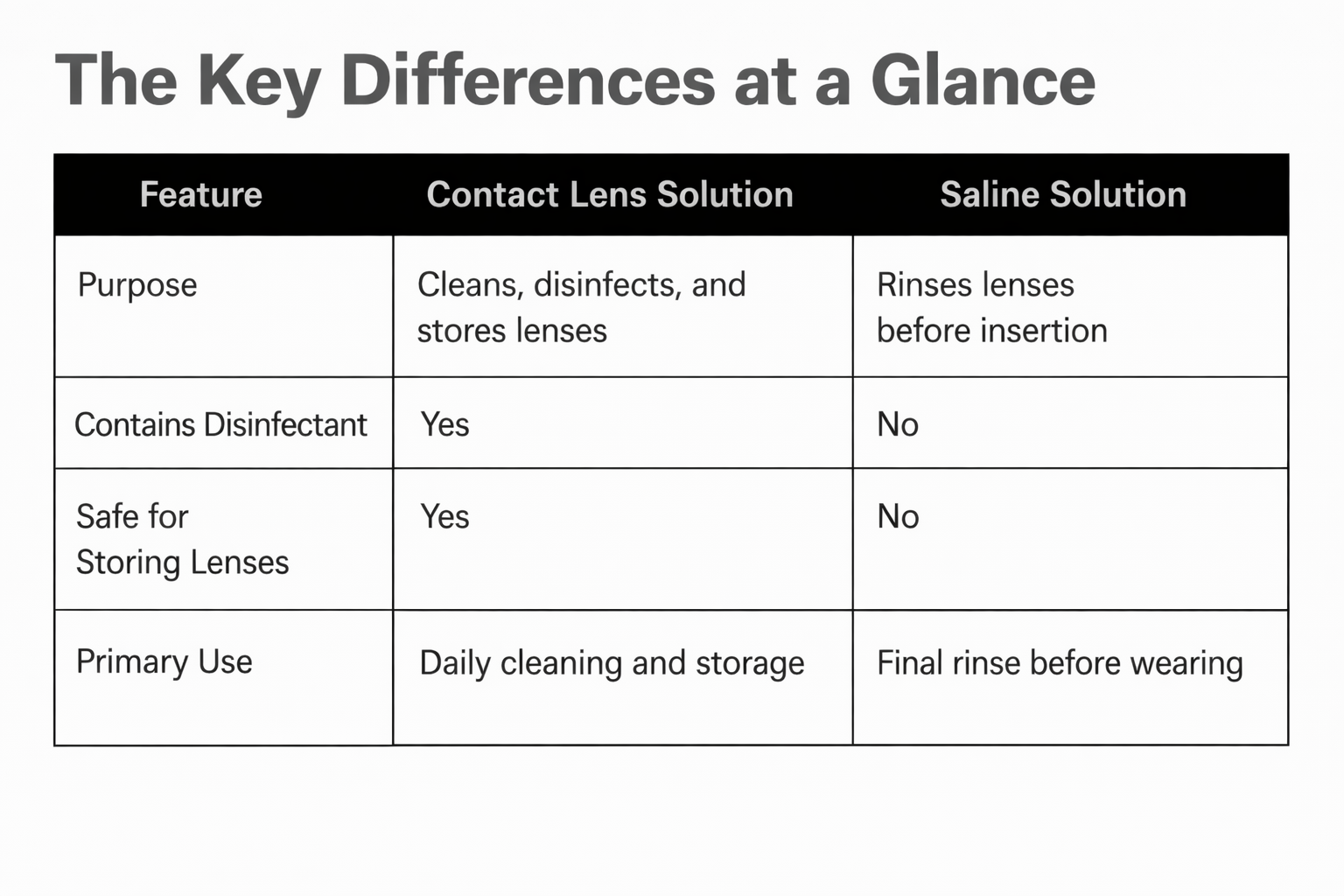
Why Using the Right Solution Matters
Using the wrong product can have serious consequences for your eyes. If you store your lenses in saline solution, bacteria can grow and contaminate your lenses. This can lead to redness, irritation, or serious infections like keratitis.
Always read the label carefully and follow your eye doctor’s instructions for which solution to use.
Proper Handling Tips for Clean, Safe Lenses
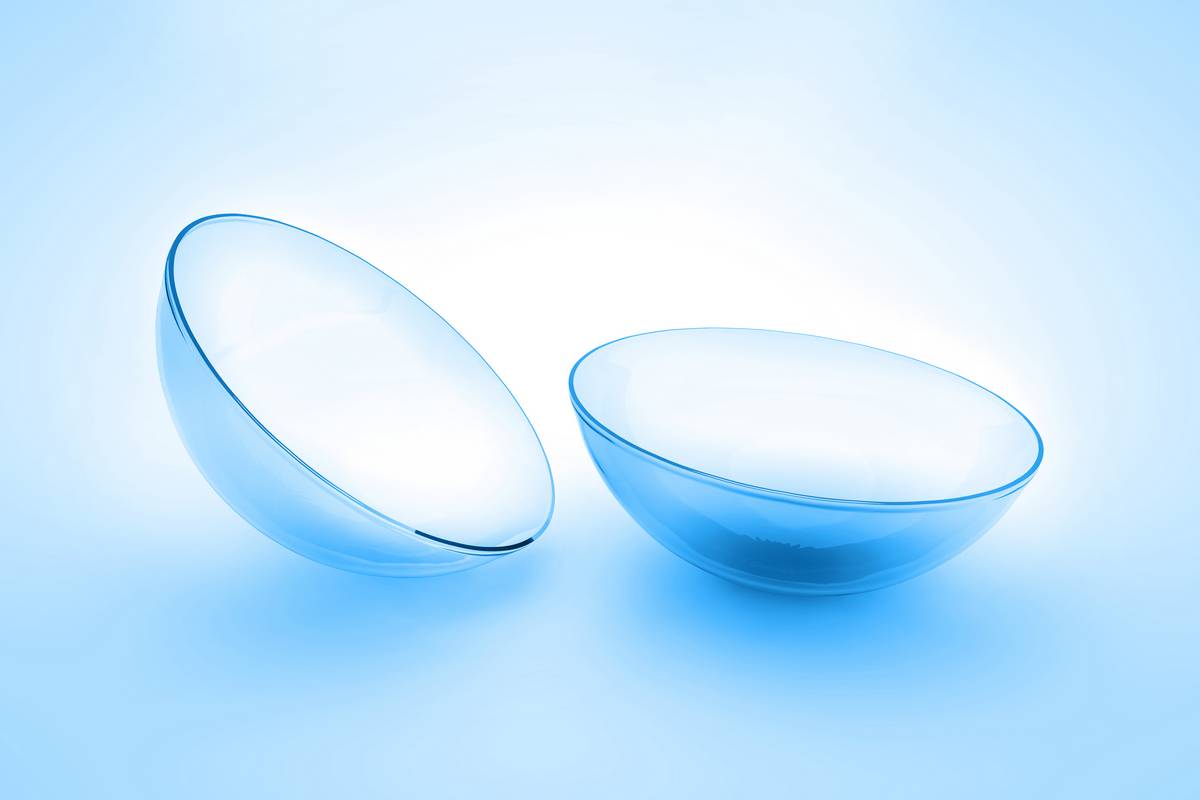
Even with the right solution, contact hygiene is critical.
Follow these steps every time you handle your lenses:
- Wash your hands thoroughly with mild, fragrance-free soap.
- Dry your hands completely with a clean, lint-free towel.
- Use your fingertips, not fingernails or tweezers, to handle lenses.
- Inspect each lens before inserting it to ensure it’s clean and smooth.
- Always use fresh solution to clean and store lenses — never reuse old liquid.
These steps help prevent scratches, residue buildup, and bacterial contamination that can harm your eyes.
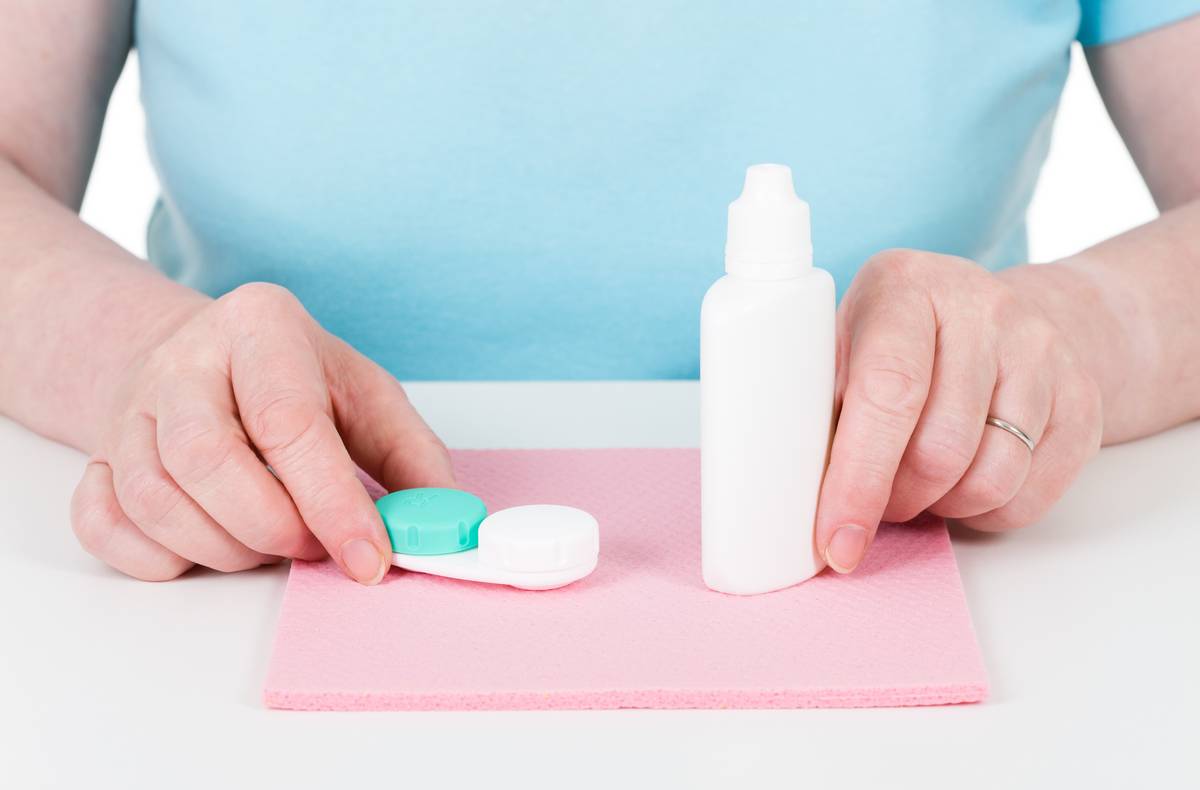
More Things to Keep in Mind
Your optometrist can give you suggestions on the use and maintenance of your contact lenses. They will know exactly how to take care of your lenses in order to keep them clean, protect your eyes and properly correct your vision.
If you're at all confused about the specifics of your prescription or what to do, you can always give your optometrist a call. If they are unavailable, someone in the office is likely to be trained to answer questions about saline solutions and contact solutions.
In the Market for Lenses?
If you're in the market for contact lens and saline solutions, you're probably looking for a set of high-quality lenses as well. Visit our site to learn more about the world of contact lenses and which one is likely to work best for you!
FAQ: Saline vs. Contact Lens Solution
Can I store my contacts in saline solution overnight?
No. Saline solution does not disinfect or protect your lenses from bacteria. Always use contact lens solution for overnight storage.
Can I use saline solution to rinse my lenses before putting them in?
Yes, saline is great for rinsing lenses right before insertion, especially if you have sensitive eyes.
Are multipurpose solutions the same as saline?
No. Multipurpose solutions clean, disinfect, and store lenses, while saline is only for rinsing.
Can I make my own saline solution at home?
No. Homemade saline can contain impurities or bacteria that can harm your eyes. Always use sterile, commercially prepared saline.
Do I need both solutions?
Most people only need multipurpose contact lens solution. However, your eye doctor may recommend using saline as an additional rinse step if your eyes are sensitive.
